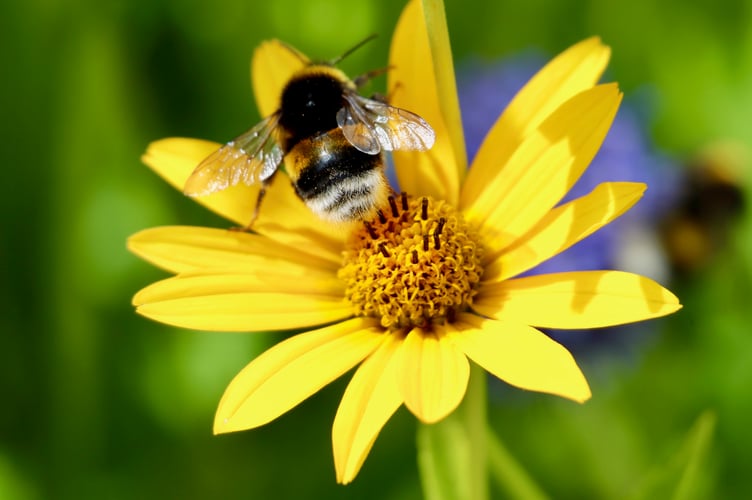One of the many enjoyable things about repairing sections of a dry stone wall is, because it’s so physically demanding, I find myself having regular ‘little breaks’ - mainly to pacify my back! My nan used to call it ‘having a whiff’ and it is an integral part of any hard, physical graft. These ‘bijou breaks’ are inevitably used to watch the surrounding wildlife in all it’s glory. I watch the crows bomb the buzzards and chase them off their territory and I watch numerous bumblebees feeding on celandines and wild primroses, making the heads bow with their weight.
The physical effort it must take for such slow and precision flying for the bumblebees is awe-inspiring, with their wings beating up to 200 times a second. A full stomach will allow about 40 minutes flying time (a bit like me in work).
And what’s not to love about a committed, furry, grafter called Bombus - the Latin name for the bumblebee, and means ‘to buzz’. I also love the fact that they really enjoy their sleep – scientists have recently discovered that sleep is imperative to bees to maintain a healthy memory needed to remember where the pollen-rich flowers are.
And they have smelly feet - to leave scent markers just inside a flower head to indicate that it has been visited and pollinated to save other bees energy and time.

The lifecycle of a bumblebee is quite different from a honeybee. The bumble bee queen is very ‘hands on’ when it comes to raising her brood. Firstly she collects nectar to energise herself after the spring hibernation, then builds her own nest and then lays and ‘shivers’ on her eggs so the vibration keeps them warm. She then feeds the larvae for the two weeks that it takes for them to reach adult bumble bees and live their own lives.
In contrast, a honeybee queen will only leave her colony to mate once in her life and then returns, where she is unlikely to ever leave again. She’s a real stay-at-home mum.
The first brood of bumblebee offspring are all ‘worker’ females, and will carry out work inside and outside of the nest. As the season progresses males are produced and once they leave the nest they don’t normally return, they just spend their time feeding and trying to mate. Most males will never mate and they all die in the autumn, which is the same for the honeybee males (drones).
So if you’re a female bee you work yourself to death, whilst the males die of boredom.
And as everyone is remarking on the fact it looks like winter is never going to leave us, I wondered (whilst building my wall) if winter should maybe issue some sort of statement. Maybe something along the lines of:
Due to much ‘bad press’, I, Winter would like to make it clear that I am actually only filling in until Spring decides what it is going to do. As my contract officially ended on the 20th March and I didn’t want to leave you without weather as a result of Spring’s indecision, this means that I am actually working overtime. Spring hasn’t even called in sick or given an estimated time of arrival. I am already tired as I worked longer than my scheduled season last year to fill in for summer and autumn. I too am fed up with the lack of commitment shown by other seasons and their lack of respect for out rota. It seems I am the only season doing any work.
Yours sincerely
Winter.





Comments
This article has no comments yet. Be the first to leave a comment.